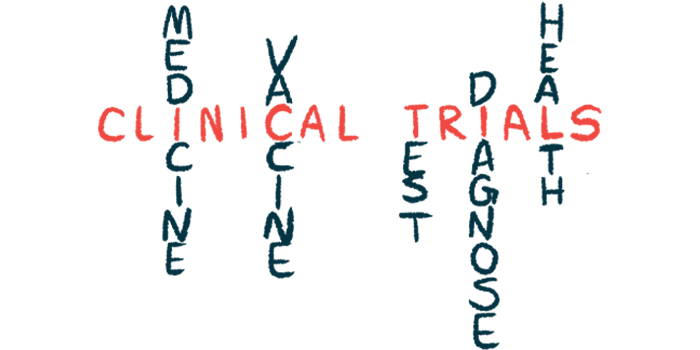AI Tool Aims to Make Progressive MS Trials More Effective for Patients
Identifying ideal Phase 2 group could be key to success in pivotal clinical trial

A new machine learning tool could help make clinical trials for progressive forms of multiple sclerosis (MS) more efficient and effective, a study suggests.
Its scientists propose that the tool, when used in initial patient studies, works to more rapidly move a potential progressive MS treatment into pivotal Phase 3 trials.
The study, “Estimating individual treatment effect on disability progression in multiple sclerosis using deep learning,” was published in Nature Communications.
Clinical trials are the gold standard for testing experimental treatments for MS. Typically, a potential therapy will first be tested in Phase 2 trials, which are smaller patient studies designed to provide a proof-of-concept and initial safety assessment. Their findings then support larger Phase 3 studies designed to test treatment efficacy.
In MS, Phase 2 trials will often use MRI-based measures as a surrogate measure of disease activity and progression. These can be a useful surrogate in relapsing forms of MS, where disease manifestations are mainly driven by new inflammation. But MRI markers are not a very good predictor of long-term disability worsening in progressive MS forms, where symptoms are mainly driven by gradually worsening nerve cell dysfunction.
Progressive types of MS — which are characterized by symptoms that continually worsen as time goes on, with or without relapse activity — have historically proven much more difficult to treat and have far fewer approved therapies.
Tool brings ‘predictive enrichment’ to progressive MS clinical trials
A team of scientists in Canada and Italy set out to create a tool that could help early clinical trials of progressive MS be designed more efficiently using a strategy called predictive enrichment. The basic idea is that, for any medicine, some people are more likely to benefit than others — so if a trial only enrolls likely responders, the study would need fewer participants to detect a statistically meaningful effect.
“A drug proven to be efficacious in a trial enriched with predicted responders can later be tested more confidently in a population predicted to be less responsive,” the researchers wrote. “This sequence prevents efficacious medications from having their effect diluted in early clinical trials due to the inclusion of a population that is too heterogeneous [varied], while still allowing for broadening of indication criteria.”
Using predictive enrichment for early trials, they added, “also improves the balance of risks and benefits for participants, since those who are unlikely to benefit from a drug would not be exposed to it and therefore would not experience potential adverse effects.”
To create their tool, the researchers first used data from three clinical trials in people with relapsing-remitting MS (RRMS): OPERA I (NCT01247324), OPERA II (NCT01412333), and BRAVO (NCT00605215).
The OPERA studies tested Ocrevus (ocrelizumab), an anti-CD20 therapy that has since been approved to treat relapsing forms of MS and primary progressive MS (PPMS), while BRAVO tested laquinimod, a T-cell-directed experimental therapy that is no longer in development. All three trials used an approved interferon therapy as a comparator.
Using data covering 2,520 RRMS patients in these three trials, the researchers trained their artificial intelligence (AI) tool.
This basically involved feeding the computer data with a set of mathematical rules to identify predictors of treatment response. The computer specifically looked for factors present at baseline (a study’s start) that were predictive of the rate of change in the Expanded Disability Status Scale (EDSS), a common measure of disability in MS.
“Importantly, the RRMS dataset is only used for pre-training and does not take part in the final model evaluation, since this study is focused on the challenge of improving the efficiency of clinical trials for progressive MS,” the researchers noted.
After the initial training, the model was fine-tuned using data from two clinical trials, ORATORIO (NCT01194570) and OLYMPUS (NCT00087529), which respectively tested Ocrevus and rituximab against placebo in people with PPMS. Rituximab is another anti-CD20 therapy that’s often used off-label in MS.
In total, findings for 70% of the participants in ORATORIO and OLYMPUS — 695 PPMS patients — were used to fine-tune the model. Data on the remaining 297 PPMS patients were then used to test the tool.
Statistical analyses generally showed the tool was able to accurately identify treatment responders. As an example, in the 30% of patients predicted to be most responsive to anti-CD20 therapy, treatment reduced the risk of disability worsening significantly by 63.9% — whereas in the 70% of least-responsive patients, no statistically significant effect on disability progression was seen.
Tool shows potential in progressive MS trials of differing therapies
In models of a hypothetical two-year Phase 2 study for an experimental anti-CD20 therapy, the researchers calculated that using this tool to enroll only the 50% of most-responsive patients could reduce the number of patients needed in the trial by sixfold.
“This approach can consistently identify and rank treatment effect among patients exposed to anti-CD20 [therapies], and could reduce by several fold the sample size required to detect an effect in a short one or two-year long trial,” the scientists wrote.
Another test of the tool using data from 318 patients in the PPMS clinical trial ARPEGGIO (NCT02284568), which compared laquinimod against a placebo, yielded generally similar results.
“We demonstrate that a model trained to predict response to anti-CD20-[antibodies] can also generalize to laquinimod, a medication with a very different mechanism of action,” the investigators wrote.
Closer analysis of the researchers’ tool indicated that it was better at predicting the response in women than men, and was generally more accurate for people with less disability and longer disease duration. The scientists noted a need for further research to explore these differences.







